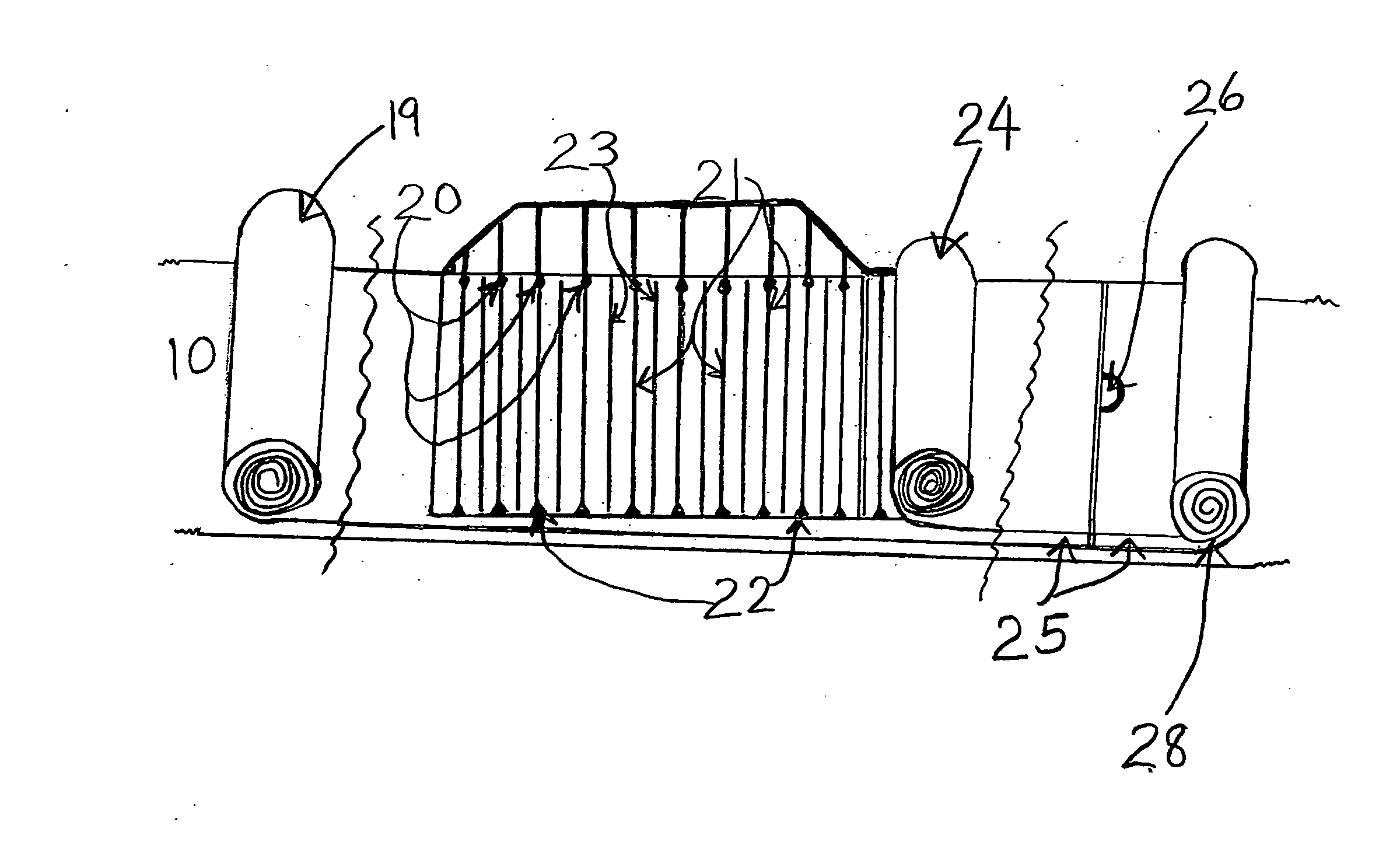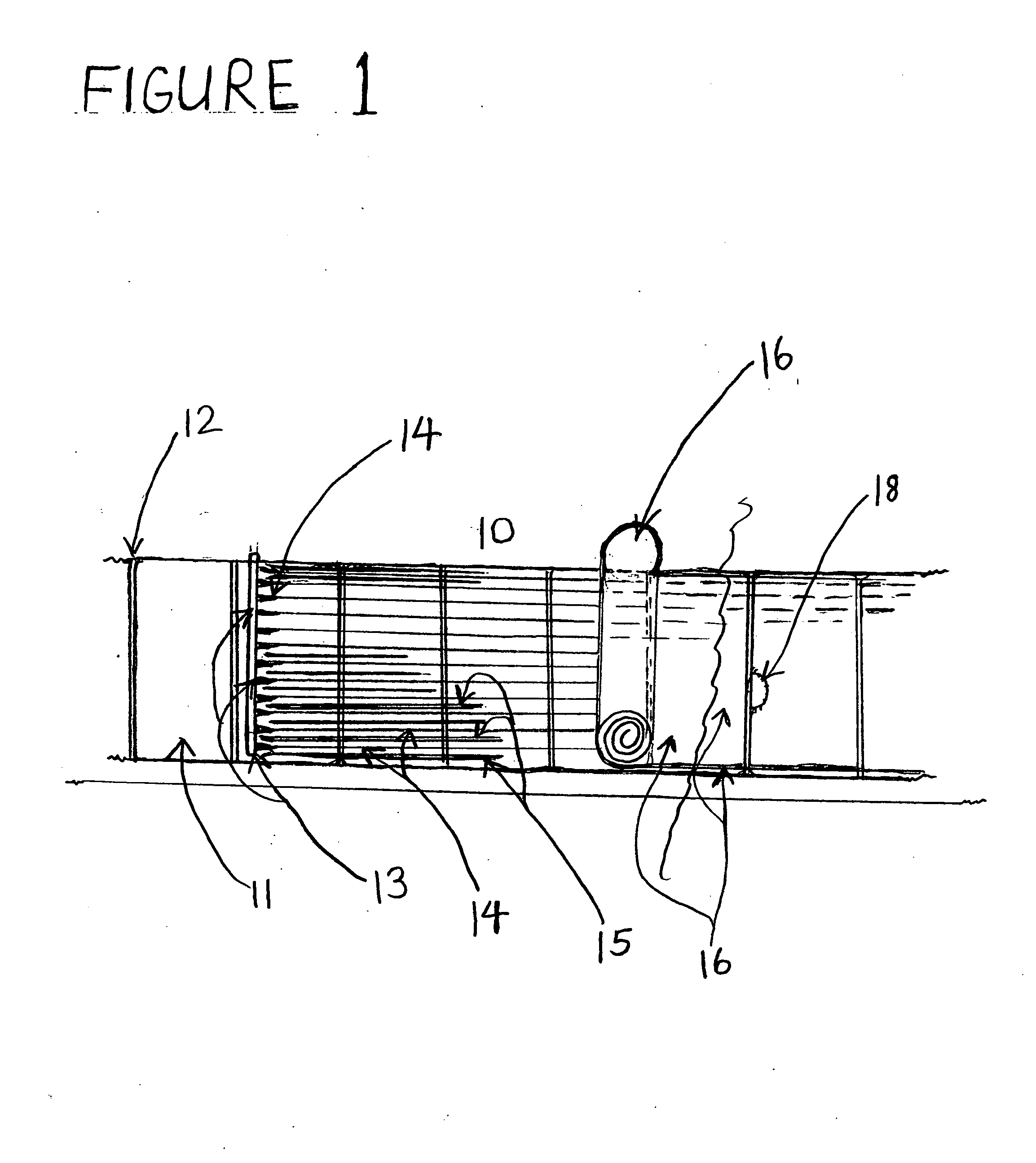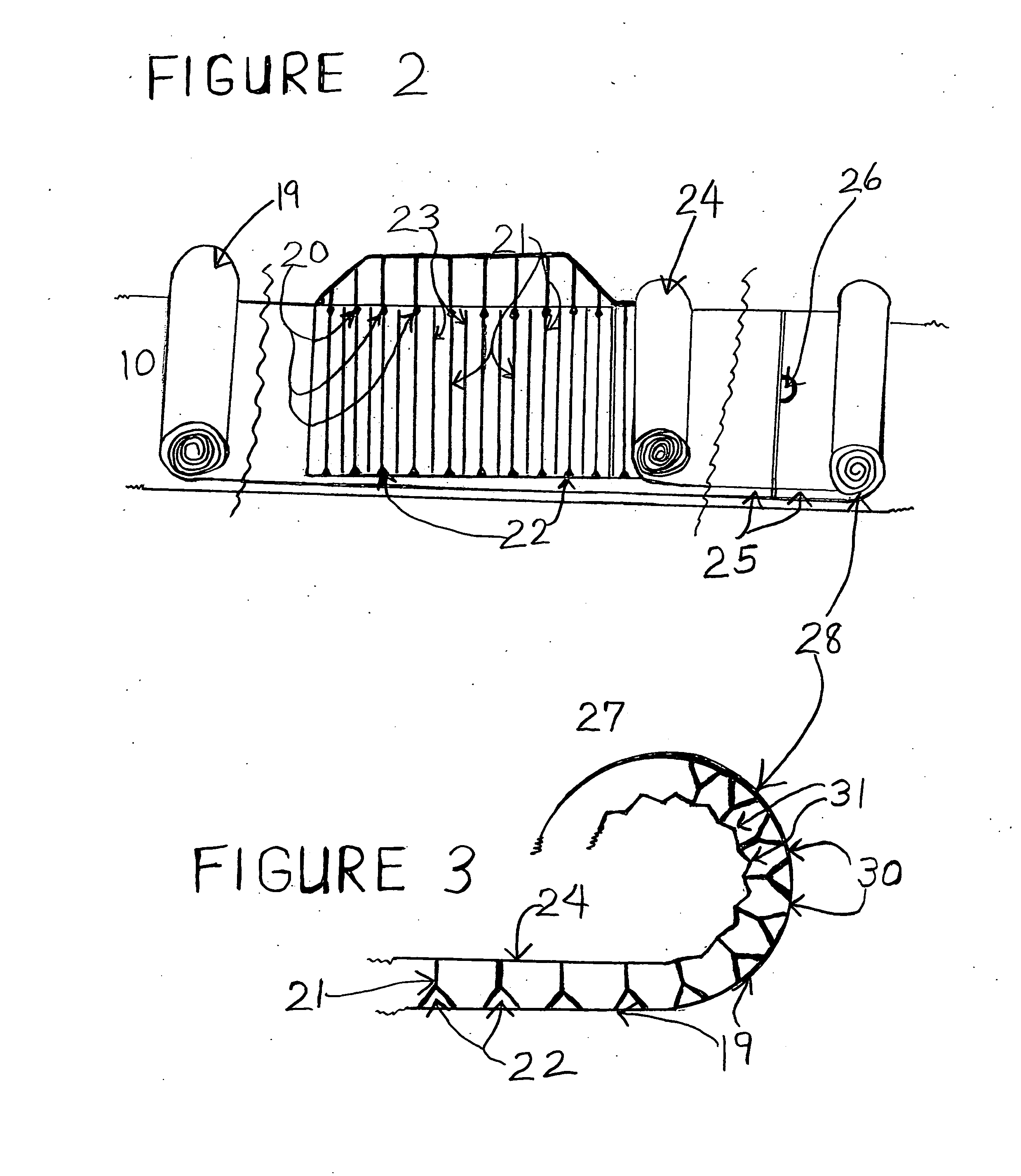Method and process to produce and attach air spacers
- Summary
- Abstract
- Description
- Claims
- Application Information
AI Technical Summary
Benefits of technology
Problems solved by technology
Method used
Image
Examples
Embodiment Construction
[0014]Shown in FIG. 1. is an overhead perspective view of a panel radiant reflective air spacer production line 10. Panels 11, such as oriented strand board (OSB) or plywood, move down the production line 10 with the panel's butted longwise edge to edge 12. An adhesive mixture, usually made up of ground wood, usually with various binder resins and some other materials is die or spray head applied 13 and are adhered by the adhesiveness of the composition adhesive mixture to the moving panels 11 in parallel spaced apart adhesive mixture, to be formed, air spacer lines 14. Forming guides 15 are usually used to help support and shape the mixture lines 14. As the mixture line air spacers harden radiant reflective material / film 16 adhered to the top edges of the mixture lines. When the air spacer mixture lines further hardens the panels, along with the parallel column line air spacers 17 and the radiant reflective material 16, are separated by a cutting device 18.
[0015]FIG. 2. in an overh...
PUM
| Property | Measurement | Unit |
|---|---|---|
| adhesiveness | aaaaa | aaaaa |
| shape | aaaaa | aaaaa |
| stiffness | aaaaa | aaaaa |
Abstract
Description
Claims
Application Information
 Login to View More
Login to View More - R&D
- Intellectual Property
- Life Sciences
- Materials
- Tech Scout
- Unparalleled Data Quality
- Higher Quality Content
- 60% Fewer Hallucinations
Browse by: Latest US Patents, China's latest patents, Technical Efficacy Thesaurus, Application Domain, Technology Topic, Popular Technical Reports.
© 2025 PatSnap. All rights reserved.Legal|Privacy policy|Modern Slavery Act Transparency Statement|Sitemap|About US| Contact US: help@patsnap.com



